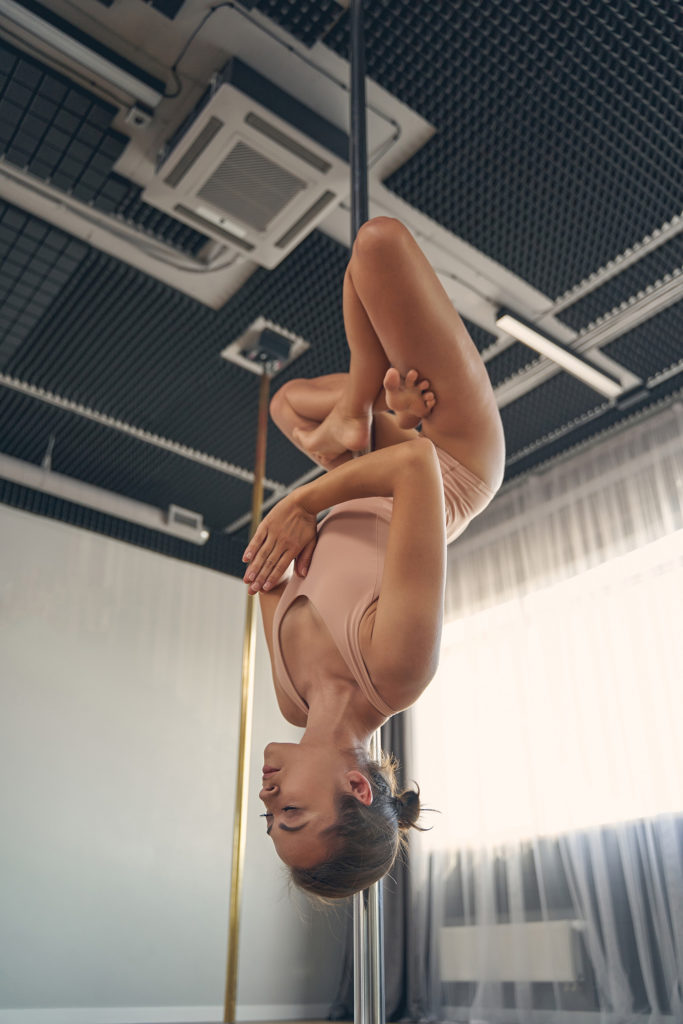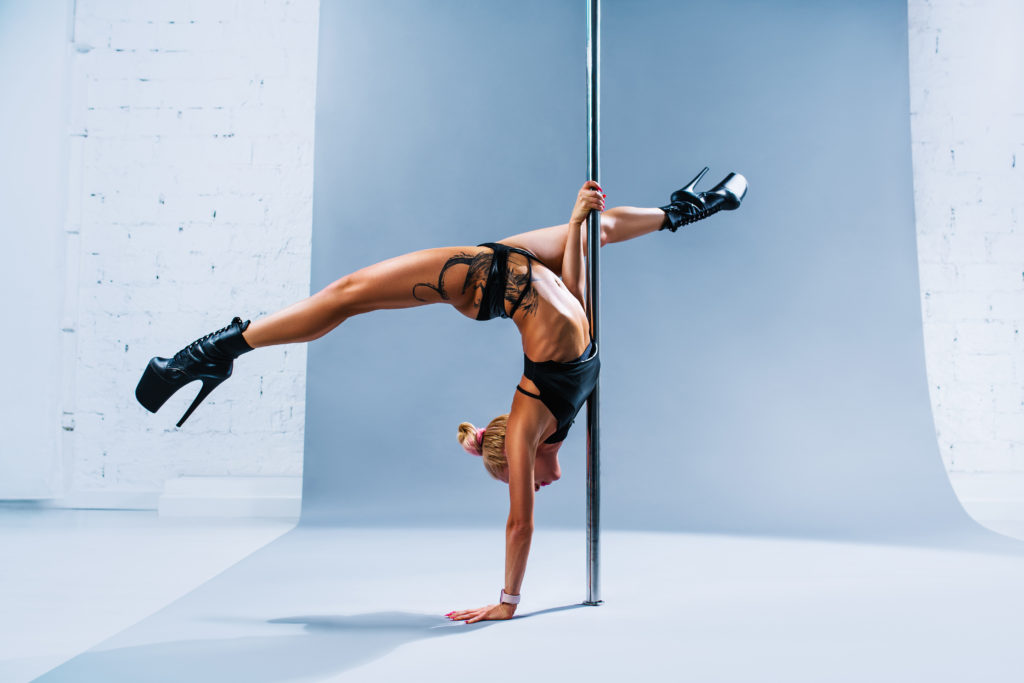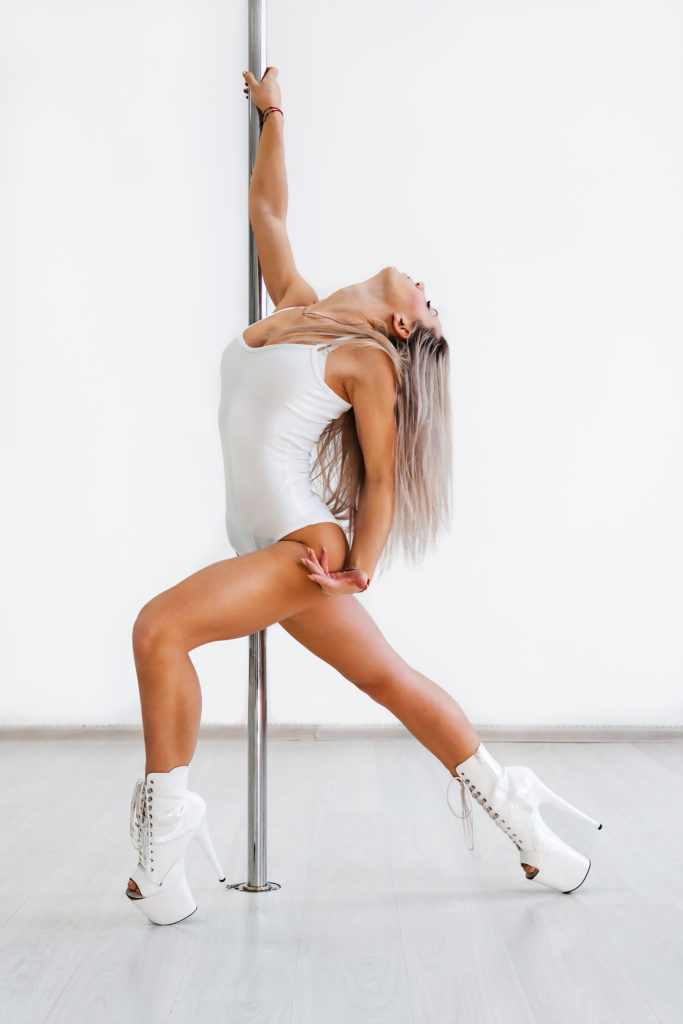
Pole Dancing Styles
Pole dancing styles – which one is for you?
We have all seen pole dancers perform with very different techniques. Some of them jump to the bar and execute a series of stunning figures, others flow on the floor with charm. Although there is much more to personal style than a pole category, a few of these categories are often used to describe the different pole genres. Much as all of them involve a good level of physical strength and endurance, Pole Sport is the style most linked with gymnastics and the one that is more standardized. Artistic Pole involves a lot of body expression and elements from other dance disciplines, and Exotic Pole embraces sensuality and musicality.
Let’s take a look at these three main styles and some of their features.
- Pole sport
Also known as a fitness pole, this style focuses on acrobatic figures and tricks, much like figure skating. This doesn’t mean that the choreographies don’t have an artistic side, they definitely do!
Pole as a sport is regulated by the International Pole Sports Federation (IPSF) and its delegations in different countries. Each national federation organizes regional and national championships, and a world competition takes place every year.
As with the rest of the pole styles, the pole itself can be static or spinning: a static pole doesn’t spin on its own, so the performers have to create momentum with their moves. Spinning on a static pole is a challenge! A spinning pole adds elegance to the performance, but the dancer has to master well the speed: not too fast for the move to be performed correctly, not too slow that the pole stops spinning before the end of the combination of tricks.

Ultra Pole
Another category that could be included in pole sport is Ultra Pole. This category aims to amaze (yes, even more!) the public by being the most innovative and extreme. Typically, the hands are what is grabbing the pole most of the time, with less emphasis on the back of the knees. Jumps, flips, and fast transitions are a core part of the ultra pole.
Although some basic moves can be learned in a few weeks, mastering pole dance involves years of training and conditioning. Not surprisingly, the International Pole Sports Federation is pushing to make pole dancing an Olympic sport. For now, it has been granted observer status by the Global Association of International Sports Federations. This means we could have pole dance in the Olympics very soon!
- Artistic pole dancing
This style is all about telling you a story. When you see a performance, you are able to feel what the dancer wants to transmit with the music and their moves on (and around) the pole. This, of course, requires a lot of creativity! Artistic performances are often supported by other material like live music or projections on a screen.
Within the artistic genre, some dancers like to focus on substyles like Drama or Comedy. Competitions like Pole Theatre, which specialize in artistic pole across the world, offer these two as categories. The IPFS also added an artistic pole as a competition category in 2017, so this style is now a part of the national and world championships.

The artistic pole is a very demanding discipline that combines elements from pole sport, and many moves from other dance disciplines like ballet, contemporary dance, or even hip hop and flamenco.
- Pole dancing in heels (often referred to exotic pole)
Last but not least, dance in heels is perhaps what comes to the minds of most people hearing about pole dance for the first time. This type of pole dancing also has own subcategories, for example: classique, stripper style, exotic pole. The latter can be further divided to Exotic Flow and Exotic Hard. Legwork and heels are a central piece of exotic choreography. If you have never tried a pair of pole shoes on, I assure you they are fun but add some difficulty to the moves. This article can help you find out more about buying your first pair of heels.

What about pole wear?
As to the clothing, for any styles that are focusing on the pole tricks, minimal is key to ensure the grip between the body and the pole. You will find dancers train and perform in pole wear that resemble bikinis. On contrary, with the exotic flow (where there is less emphasis on the pole tricks and more on the dancing and flow) you will often more coverage such as leggins or long sleeve tops. Additionally, knee pads are very useful if the choreography involves a good amount of floorwork, which is usually the case since the floor is beautifully integrated as another element of the choreography in exotic pole dance.
You may be thinking that exotic pole dancing looks less difficult than the other categories, but it definitely isn’t the case! This style is no exception and involves a lot of endurance, flexibility, and strength. Advanced moves like deadlifts, smooth transitions, and body waves take a lot of body control and exotic lessons are a great full-body workout (and a confidence booster) for everybody who wants to try!
There are, of course, many varieties of the exotic domain since all the styles are, in practice, intertwined. For example, the Russian exotic style merges elements of ballet, contemporary, strip plastic and erotic dancing. This discipline combines graceful flows on the floor, acrobatic elements, and, naturally, splits.

Pole dancing styles – which one should you choose?
This is very personal, so our advice would be to try them and see which one resonates with you. Your background may also be a good starting point, if you have practiced another dance discipline before, you may be more inclined towards the artistic or exotic side of pole dancing, while coming from gymnastics could make you lean towards pole sport.
As we mentioned before, no need to put a label! Unless you are preparing for a specific competition with clear rules, you can mix and match what you like from each style in your choreographies. If you have a pole at home you can take lessons on the different styles and pick your favourite.

[…] Pole dance in all its styles is actually a complete workout that includes both cardio and strength training. Everybody identifies cardio with weight loss, but as we mentioned before, building muscle is key to a healthy and toned body. […]
[…] you haven’t heard of exotic dancing, this style combines pole dance, contemporary dance, and other disciplines like […]
[…] dancing, floorwork is just as essential as aerial tricks, and it’s important in all styles—from fitness pole to exotic pole. It’s not just about climbing the pole or performing […]
Sign in to comment!